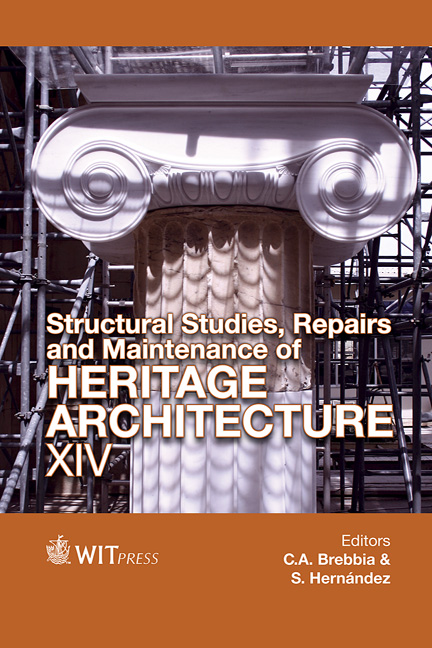Advances For The On-site Determination Of The Stresses State In Timber Structures In Service
Price
Free (open access)
Transaction
Volume
153
Pages
11
Page Range
771 - 781
Published
2015
Size
716 kb
Paper DOI
10.2495/STR150641
Copyright
WIT Press
Author(s)
M. Crespo de Antonio, D. Luengas-Carreño, S. Sánchez-Beitia
Abstract
The assessment of nondestructive (NDT) or semi-destructive techniques (SDT) for the in situ structural characterization in existing constructions is one of the most important challenges for the scientific community. The hole-drilling method is considered as a SDT because the damage caused to the analyzed element affects neither its integrity nor its load-bearing capacity. The experimental process is to measure the relaxed strains caused by the removal of a small round of material. These relaxed strains are recorded by previously well adhered strain gages according to the corresponding ASTM standard. It is possible to deduce the stress status before the material removal using the correct mathematical scheme.
This paper shows the advances of the setting of the hole-drilling method for the deduction of the stress-state on supporting wood members in existing structures (buildings and civil constructions). The relationship between the relaxed strains after removing the material and the stress that causes them has been identified in the laboratory by means of the deduction of its corresponding compliance matrix. The laboratory-tested samples of Pinus radiata D. Don had a structural size, being loaded under a known uniaxial compression imitating piers. The main goal is to complete compliance matrix for this material and for compression situations. The matrix will be useful in deducing the real stresses in regions of timber structural members made of this kind of wood.
Keywords
on site assessment, hole-drilling technique, timber structures, ancient constructions, compliance tensor, compression loading




